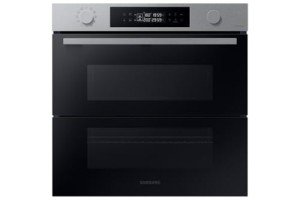Oven Built In: What's The Only Thing Nobody Is Talking About

Understanding Built-in Electric Ovens: A Comprehensive Guide
In modern-day cooking areas, built-in electric ovens have ended up being a standard function, providing convenience, effectiveness, and a sophisticated combination into kitchen style. This post aims to inform house owners and cooking lovers about the benefits of built-in electric ovens, essential factors to consider when selecting one, and maintenance ideas to guarantee lasting functionality.
What is a Built-in Electric Oven?
A built-in electric oven is designed to be set up within cabinetry or walls, flawlessly mixing into the kitchen's architecture. Unlike standalone ovens, these models conserve floor area and can be located at eye level, facilitating simple access and monitoring while cooking.
Benefits of Built-in Electric Ovens
- Area Efficiency: These ovens utilize vertical area, making them perfect for smaller kitchen areas or those aiming to take full advantage of counter area.
- Visual Appeal: Built-in ovens provide a tidy and modern appearance that boosts the kitchen's general style.
- Ergonomics: They are set up at comfy heights, decreasing the strain on the back and knees, especially when loading or unloading dishes.
- Advanced Features: Many built-in electric ovens come with high-tech functions like smart controls, convection cooking, and self-cleaning alternatives, which can make cooking easier and more efficient.
- Enhanced Functionality: Models typically consist of additional functions such as multiple cooking modes, timers, and temperature probes.
Key Considerations When Choosing a Built-in Electric Oven
When selecting a built-in electric oven, several factors must be taken into consideration to guarantee it meets your cooking needs and fits within your kitchen design.
Size and Capacity
Built-in electric ovens generally come in different sizes. It's necessary to measure the designated space to guarantee a proper fit. Here prevail sizes:
- Single Oven: 24 to 30 inches broad, appropriate for a lot of cooking tasks.
- Double Oven: Two different compartments, allowing you to cook several meals at various temperature levels.
- Wall Ovens: Available in plus sizes, fit for substantial cooking experiences.
Functions
Choosing functions that line up with your cooking routines is crucial. Consider the following choices:
- Convection Cooking: Distributes heat uniformly for constant outcomes.
- Smart Technology: Enables remote control and pre-heating by means of smart device apps.
- Self-Cleaning: Simplifies maintenance and cleansing processes.
- Steam Cooking: Adds moisture to dishes for better cooking outcomes.
Installation Requirements
Built-in electric ovens require sufficient electrical circuitry and ventilation alternatives. It's recommended to talk to professionals during the setup stage to meet electrical codes and ensure safety.
Price Range
The expense of built-in electric ovens can vary substantially from spending plan alternatives (₤ 600 - ₤ 1,200) to high-end designs (₤ 2,000 and above). Consider your spending plan and cooking frequency when selecting.
| Price Range | Features | Best For |
|---|---|---|
| ₤ 600 - ₤ 1,200 | Fundamental functions, manual controls | Casual cooks |
| ₤ 1,200 - ₤ 2,000 | Convection, wise innovation | Severe home cooks |
| Above ₤ 2,000 | Premium materials, advanced features | Expert chefs or gourmet cooking lovers |
Maintenance Tips for Built-in Electric Ovens
Ensuring that an electric oven operates efficiently includes regular upkeep. Here are some useful suggestions:
- Regular Cleaning: Wipe down the door and inside the oven after each use to avoid grease accumulation.
- Self-Cleaning Cycle: Utilize the self-cleaning function regularly (if available). Follow the manufacturer's directions for optimal performance.
- Inspect Seals and Gaskets: Inspect the door seals for wear and tear to preserve cooking performance.
- Adjust Temperature: Regularly check and adjust the oven's temperature for precision cooking.
- Professional Servicing: Schedule annual maintenance talk to qualified professionals, specifically for advanced designs with numerous electronic components.
Frequently Asked Questions (FAQs)
1. Are built-in electric ovens more effective than standard ovens?
Yes, built-in electric ovens typically have better insulation and features like convection cooking that can cook food faster and uniformly, saving energy.
2. Can I set up a built-in electric oven myself?
While some handy people may pick to attempt a DIY installation, it is recommended to work with an expert to ensure safe and certified installation.
3. Just how much power does a built-in electric oven use?
Typically, built-in electric ovens take in between 2,400 to 5,000 watts, depending on the design and features. Constantly refer to the maker's specifications for precise figures.
4. Built In oven and hob packages with installation built-in electric ovens require unique kitchen cabinetry?
Yes, built-in electric ovens require custom-made kitchen cabinetry or wall enclaves that support their weight and allow for appropriate ventilation. Guarantee that the cabinetry adheres to installation standards outlined by the maker.
Built-in electric ovens are an important addition to any contemporary kitchen, using an array of functions that make cooking easier and satisfying. By comprehending the benefits, selection requirements, and upkeep requirements related to these ovens, consumers can make informed choices that line up with their culinary needs and way of life choices.

